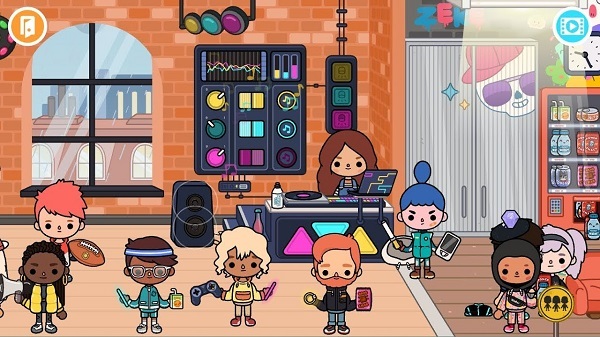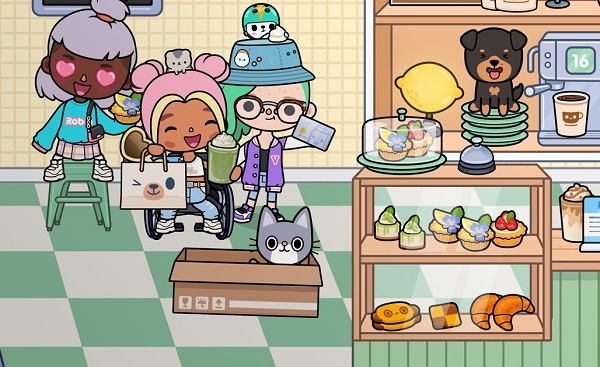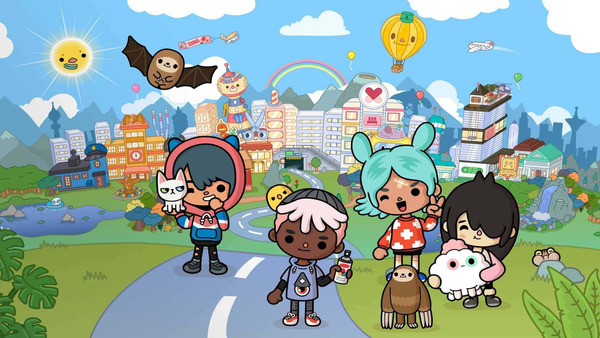Toca Life offers players an open-ended experience where creativity has no limits. Players can explore various settings, interact with characters, and create their own narratives. Whether you’re new to the game or looking to refine your storytelling skills, this guide will walk you through the steps to build engaging stories in Toca Life.
Getting Started with Toca Life
Before diving into story creation, familiarize yourself with the basics of the Toca Life game. Understanding how to navigate the game’s features will help you create more intricate stories.

Before diving into story creation, familiarize yourself with the basics of the Toca Life game
Exploring Different Locations
Toca Life features multiple locations, such as cities, schools, hospitals, and parks. These settings allow for a variety of story ideas. Spend time exploring each world, interacting with objects, and figuring out which environments best suit the stories you want to tell.
Getting to Know the Characters
The game is filled with an array of colorful characters. Each character can serve different roles in your stories, such as heroes, villains, or supporting characters. Experiment with different characters to find combinations that make your stories dynamic.
Building the Foundation of Your Story
Once you’re familiar with the basics, it’s time to start crafting your narrative. A great story needs structure, and in Toca Life, you can create that structure through setting, characters, and plot development.
Choose a Setting for Your Story
The first step to creating a story is choosing the right setting. Does your story take place in the bustling city, a quiet school, or perhaps a magical land? Your setting will shape the tone of your narrative.
Tip: Combine different settings for a more layered and expansive storyline.
Develop Your Main Characters
Next, choose your main characters. Decide on their roles and personalities. Are they adventurous, shy, or mischievous? Characters drive your plot forward, so make sure they have depth and purpose.
Tip: Use character interactions to reveal their traits and relationships as your story progresses.
Creating the Plot of Your Story
Now that you have your setting and characters, you can start plotting the main events of your story. Think about the beginning, middle, and end of your narrative.
Setting Up the Story’s Conflict
Every good story needs a conflict. It could be a simple challenge, such as completing a school project, or something more complex, like saving a town from a disaster.
Tip: Introduce the conflict early in the story to create excitement and direction for your characters.
Building the Middle of the Story
The middle of your story is where characters face obstacles and challenges. Characters should evolve and learn from their experiences during this stage. For instance, they might meet new friends, discover hidden secrets, or face unexpected difficulties.
Tip: Keep the pace steady and build toward the resolution of the conflict.
Using Props and Objects to Enhance the Story
Toca Life is filled with interactive props and objects that can bring your story to life. Use these tools to add realism and creativity to your storytelling.
Incorporating Everyday Items
Use items like food, toys, and books to flesh out your story. A character might share a meal with a friend, or read a book to discover something important.
Tip: Pay attention to the way characters interact with items, as it can add depth to your story.
Finding Special or Hidden Objects
Some objects in Toca Life are hidden or require special actions to unlock. Incorporating these items into your story can create unexpected twists or surprises.
Tip: Use special objects as key story elements that help solve problems or reveal new plot points.
Adding Drama with Character Relationships
A great way to make your story more engaging is by building relationships between characters. Characters can be best friends, rivals, or even strangers at first, creating drama and excitement.
Developing Friendships and Bonds
Characters can form friendships based on shared experiences. A group of characters might team up to solve a mystery, creating a sense of unity in the story.
Tip: Friendship dynamics can change throughout the story, adding more layers to the narrative.
Creating Tension and Conflict
Not all relationships have to be friendly. Characters might have disagreements or conflicts that need to be resolved. This tension can push the story forward and lead to a satisfying resolution.
Tip: Introduce conflict between characters to add drama and emotional stakes to the story.

Introduce conflict between characters to add drama and emotional stakes to the story.
Expanding the Story with Multiple Worlds
Once you’re comfortable creating stories in one world, you can expand your narratives by introducing new settings and connecting different worlds within Toca Life.
Combining Multiple Worlds
You can use characters from different locations and bring them together for a larger, more intricate story. For example, a character from the city might visit the hospital for an adventure, or a school character could go on vacation.
Building Larger Universes
Creating stories across multiple Toca Life games can help you build a more complex world. Connecting different locations makes the game feel larger and gives you more freedom in storytelling.
Tip: Use travel between locations as a way to add exciting new plot developments.
Introducing Story Twists and Surprises
A good story often has unexpected twists that keep the audience engaged. In Toca Life, you can introduce surprises that take your story in new directions.
Adding Unexpected Events
You could add a surprise twist where something unexpected happens. Maybe a character discovers a hidden area, or a sudden event changes the course of the story.
Introducing New Characters or Challenges
Sometimes, introducing a new character halfway through the story can change the dynamics. Alternatively, a new challenge, such as a lost item or a weather disaster, can bring a fresh angle to the plot.
Recording and Sharing Your Stories
Once you’ve created your Toca Life story, you can share it with others by recording your gameplay.
Using the In-Game Camera
Toca Life includes a feature that allows you to record your gameplay as you act out your story. This is a great way to capture your creativity and share it with friends or family.
Sharing Your Stories Online
After recording, you can post your Toca Life stories on social media, YouTube, or other platforms. Sharing your work allows others to see your creativity and may inspire them to create their own stories.
Wrapping Up Your Story
As your story comes to a close, make sure you conclude it in a satisfying way. Resolve any conflicts and give your characters a proper ending.
Resolving the Main Conflict
Ensure that the story’s central problem is solved. This could be a character achieving their goal, a mystery being solved, or simply the characters learning something valuable.
Adding a Memorable Conclusion
End your story with a memorable moment, whether it’s a celebration, a reflection, or an emotional payoff. This closing moment will give your story a sense of completion.

End your story with a memorable moment, whether it’s a celebration, a reflection, or an emotional payoff
Conclusion: Master Storytelling in Toca Life
Toca Life is a playground for your imagination. With endless opportunities to create stories, you can explore unique characters, settings, and plots that captivate both you and your audience. By following the steps outlined in this guide, you’ll be well on your way to mastering storytelling in Toca Life and creating your own adventures.


